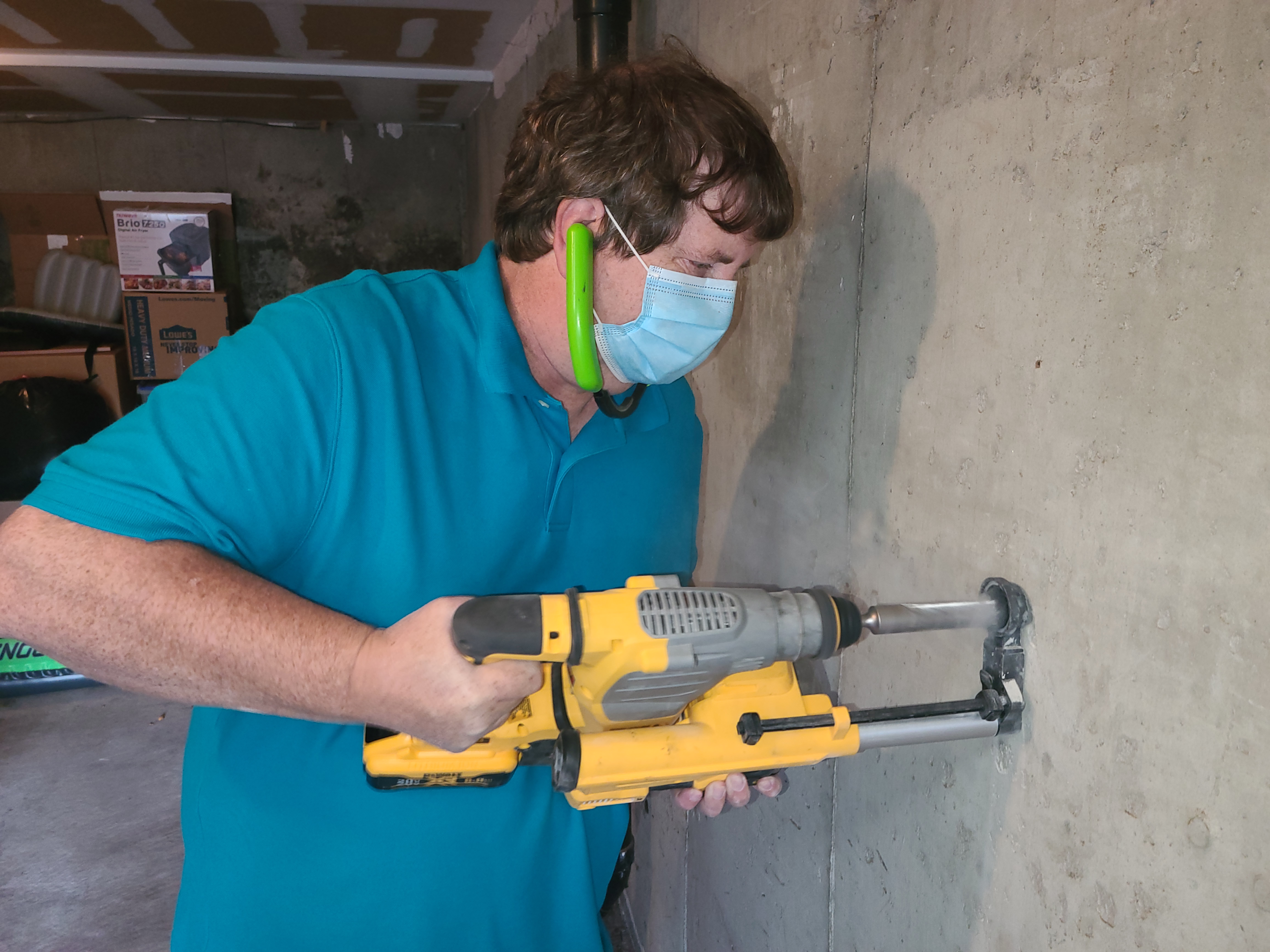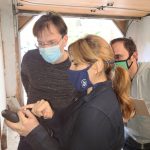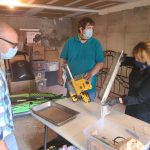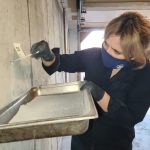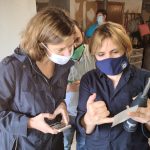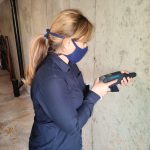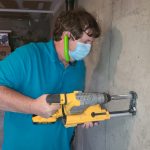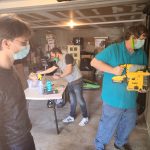Solutions for Connecticut’s ongoing crumbling foundation crisis will continue to be explored by UConn, thanks to federal funding secured by Connecticut’s Congressional delegation.
Last year, the Connecticut delegation worked to secure $1.5 million of funding for the National Institute of Standards and Technology (NIST) to conduct research on the effects of the mineral pyrrhotite on concrete foundations.
NIST has awarded UConn $768,000 of that federal funding to support research that captures information on the premature degradation of concrete foundations that contain pyrrhotite, and seeks to build a risk assessment framework for identifying and evaluating potential mitigation strategies.
Crumbling foundations are a debilitating problem in Connecticut, particularly in the northeastern region of the state. The crumbling is due to high levels of pyrrhotite, an iron sulfide mineral that can react with oxygen and water and cause swelling and cracking in the concrete used to make the foundation and basement walls.
“This grant is an important step toward effective relief for homeowners and businesses,” says U.S. Sen. Richard Blumenthal. “Hundreds of Connecticut homeowners and businesses have been caught in the continuing financial and emotional nightmare of repairing and rebuilding crumbling foundations. As the nation’s premier standard-setting public agency, NIST has the expertise to coordinate research into pyrrhotite – a mineral of which we have too little understanding. UConn, located in the area with the greatest number of crumbling foundations, has been an early leader in research and testing.”
“I’m proud that we fought to secure this grant for UConn to help us better understand the risks that pyrrhotite poses to concrete foundations so that we can assess the scope of this crisis,” says U.S. Sen. Chris Murphy. “Too many homeowners in Connecticut have had their lives turned upside down due to crumbling foundations. While there is still much work to be done, hopefully this will bring us a little closer to understanding the problem and delivering relief to homeowners in Connecticut who desperately need it.”
“We’ve got thousands of people in eastern Connecticut and across our region with crumbling foundations, and this research will help us get a better understanding of the scope of the crisis, and a clearer understanding of the risks of pyrrhotite and the levels at which it poses a true danger to the integrity of a concrete foundation,” says U.S. Rep. Joe Courtney, who represents the state’s Second Congressional District, where many of the crumbling foundations have been identified.
A UConn team led by Maria Chrysochoou, head of the Department of Environmental Engineering, Associate Professor of Civil Engineering Kay Wille, and James Mahoney of the Connecticut Transportation Institute, will use this funding to continue their research on this subject, which dates back to 2015.
“I would like to thank our Connecticut Congressional delegation for securing federal funding for UConn to continue to research this critical problem,” says UConn President Thomas Katsouleas. “This is an issue that literally hits home for many Connecticut residents, with a high number of occurrences that happen in the area of our Storrs campus.”
When the group started working on this problem, one of the key challenges was a lack of reliable and efficient testing for pyrrhotite in concrete. In 2018, UConn provided $300,000 to the research group to develop a method to test for pyrrhotite reliably, accurately, and efficiently. With this new research grant, this test method in combination with other tests, will be used to collect meaningful data sets for further analysis.
“We aim at developing a risk assessment system where we can evaluate the risk of deterioration of a tested foundation,” says Wille. “We can help determine what needs to be done. Can this house wait? Do we need to follow up with any actions? What does it mean right now for the house?”
The UConn researchers will study both concrete in existing structures and will also mix their own concrete.
“We will collect samples, which could be a few years old or several decades old,” says Wille. “This also includes doing a laboratory study of mixed concrete under controlled conditions. We know exactly what has been put in this concrete and we can test all constituents beforehand. We can investigate what the pyrrhotite will do in the concrete and then we can connect all this information.”
For Mahoney, the work is personal, as he is a former owner of a home that had a cracked foundation in need of repair.
“It’s amazing, even as an engineer and really understanding the problem, just how invasive this is to your life and how much it changes your whole attitude,” says Mahoney. “You look at your house and say ‘Wow, this is pretty much worthless.’ It is life-consuming.”
The costly repairs for the problem include moving everything out of the basement and raising the home on jacks as a new foundation is poured.
“You loose your landscaping, sidewalks, and patios,” says Mahoney. “When they put it back down, at least you have a new foundation, but you have so much you need to replace. It is a lot of time and money. It is disturbing, to say the least.”
“This award highlights how this crisis is an all hands on deck situation,” says U.S. Rep. John Larson, who represents Connecticut’s First Congressional District. “With federal resources, local leadership, and UConn’s expertise, this effort will further our understanding of how pyrrhotite actually affects building foundations.”
“I have long supported funding in the CJS Appropriations bill to study the crumbling foundations crisis that has affected communities in Connecticut and the Northeast,” says U.S. Rep. Rosa DeLauro, who represents Connecticut’s Third Congressional District. “Throughout our state, businesses, homeowners, schools, and local municipalities have battled crumbling infrastructure due to the mineral pyrrhotite. The funding and report language included in the fiscal year 2021 Commerce, Justice and Science appropriations bill will work to study this issue at the National Institute of Standards and Technology in partnership with research universities like the University of Connecticut. I am proud to partner with the entire Connecticut Congressional delegation to support this critical funding and research effort at the federal level.”
Chrysochoou used a medical analogy to compare the type of advice the UConn research will now be able to give to property owners.
“If the doctor says there is something wrong with you, you want to know how bad it is,” says Chrysochoou. “What is my condition? What can I do for it? Those are the questions you ask. And so, you can think of pyrrhotite as a new disease that we are trying to understand. We need to build up our knowledge, and the more data we collect, the more we can improve our understanding of what is happening and what the long term outlook is.”
Chrysochoou, Mahoney, and Wille see the UConn research as part of a team effort to combat this problem.
“There are some pretty incredible people out there who are working diligently with the State of Connecticut and with our Congressional delegation to try to help this problem move forward,” says Mahoney. “There are a lot of people working on this problem, because it is so extensive and costly to deal with”
